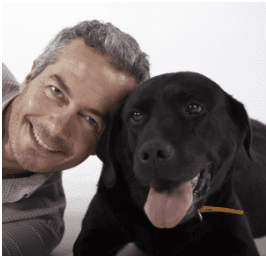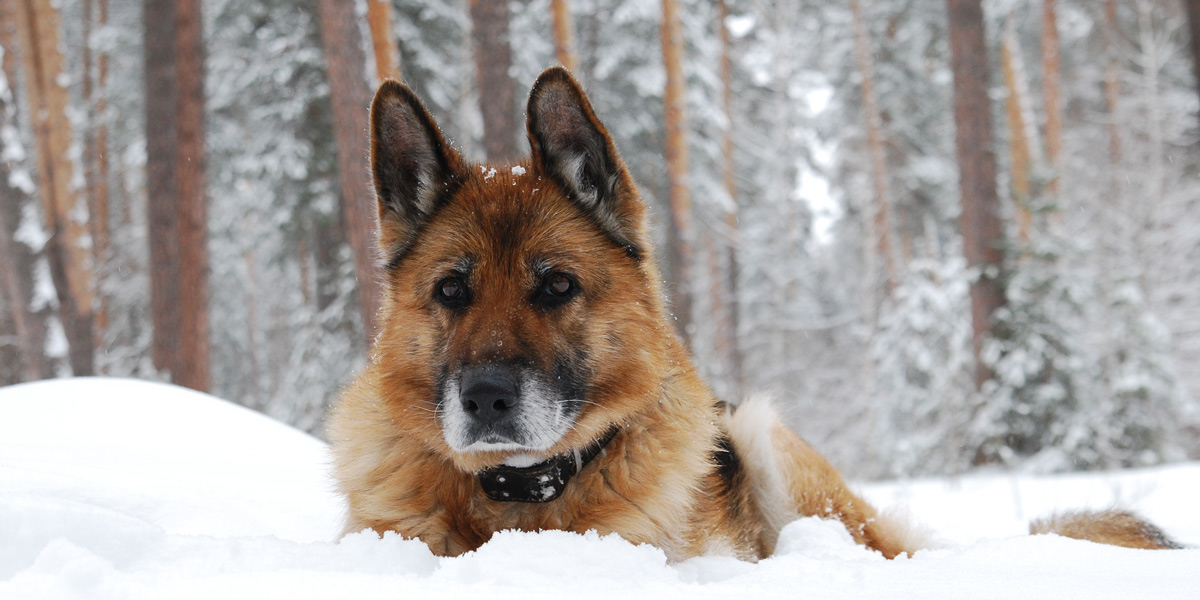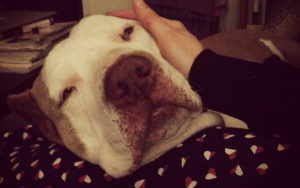The winter months can be a difficult time for senior dogs. Joint pain, difficulty regulating body temperature, and dulled senses can make cold weather uncomfortable or even dangerous.
With this in mind, here are eight ways to keep an elderly dog safe and happy this winter.
1. Make Sure Your Dog Stays Warm
The first tip is also the most obvious: keep your dog warm during the winter!
Older dogs find it hard to regulate their body temperature during cold weather. This is especially difficult for breeds without thick double coats, but all elderly dogs are affected.
Fortunately, there are plenty of ways you can help your dog stay warm. Turning up the heating is an obvious solution, but you could also consider a heated bed or even a jumper. Just adding some vet bedding or a blanket to the crate can be enough to make your pet more comfortable.
2. Maintain Exercise Levels
Warmth is essential for a senior dog’s wellbeing during winter, but exercise is also important.
Aside from maintaining your dog’s cardiovascular system and muscles, a walk provides mental stimulation which is vital for your pet’s wellbeing. A lack of exercise can also cause your pet’s joints to become stiff and painful.
So, while you don’t want to over-exercise your senior pet, daily exercise is still required.
The only exception is if your dog is very old and can’t handle cold temperatures or outdoor walks. If your dog isn’t capable of walking in cold weather, try to provide indoor mental stimulation instead.
3. Always Stay Close to Your Pet
A senior dog’s senses aren’t as sharp as they once were. This, combined with scent-covering frost or ice, can make it easy for your pet to get lost on a walk.
For this reason, always keep your pet close during the winter months – especially in harsh weather or areas your pet isn’t familiar with.
Ideally, a senior dog should be kept on a leash during the winter, as this eliminates the risk of getting lost and prevents over-exercising.
As always, your pet should be microchipped and have an up-to-date ID tag.
4. Be Aware of Increased Joint Pain
Just like humans, a dog with arthritis may stiffen up during the winter months.
You can manage this by keeping your dog warm and providing a supportive orthopedic bed. There are some excellent orthopedic beds on this list by The Dog Clinic, but whichever you choose make sure the mattress is thick enough to support your pet’s weight. It’s also a good idea to go for a vet check-up during the winter, as medication or natural supplements can reduce inflammation.
Aside from reducing pain directly, it’s important that all family members are aware of your dog’s joint problems. Ask them to give him plenty of rest and to avoid putting pressure on his sore joints.
Additionally, you may want to split your dog’s exercise into two shorter walks in the morning and evening. It’s hard for many senior dogs to resist over-exercising on a long walk, which can make joint pain worse.
5. Care for Your Dog’s Paws
Rock salt, which is spread over pavements and roads during cold weather, can be damaging to your dog’s foot pads and paws. Ice and snow, while less dangerous than rock salt, can also cause irritation and bleeding.
To prevent your pet’s paws drying out, always clean his feet and dry them thoroughly after a walk. If the pavements around your home have rock salt during the winter, a set of dog boots can provide extra protection.
6. Be Extra Cautious During Wet, Cold Weather
A dog’s fur does a great job of keeping your pet at the right temperature most of the time, but it becomes much less effective when wet.
This can make wet weather uncomfortable for any dog – but especially senior canines who already struggle to regulate their body temperature. To keep your pet safe, try to avoid walking in the rain during the winter and dry your pet thoroughly after romping in the snow.
7. Car Interiors Are Dangerous in Winter Too
The message that dogs should never be left in a car during even mild weather is finally getting through – but cold temperatures can also be hazardous.
The problem is that car interiors become cold very quickly during the winter. This can make it impossible for a senior dog to warm up, leading to dangerously low body temperatures. It doesn’t take long for hypothermia to set in during these conditions.
For this reason, never leave your pet alone in a car during the winter – or any other time.
8. Don’t Walk in Extreme Cold
I’ve talked about the importance of maintaining exercise levels, but there are some weather conditions that are simply too dangerous to walk in.
Extreme cold, snowstorms, or just cold weather with severe wind chill, can all cause a senior dog’s body temperature to drop dramatically. Hypothermia and frostbite are both more common in older dogs during the winter, and should be avoided at all costs.
For this reason, avoid walking with a senior dog in extreme weather conditions. Try to use indoor games to provide mental stimulation on days when it’s not possible to spend time outside.
If you suspect your dog is suffering from hypothermia, frostbite or any other medical issue, contact a vet immediately. Your dog’s life may depend on it.
Summary
The winter brings new dangers for any dog – but it particularly affects senior canines. Existing health conditions and the effects of aging can turn cold weather into an uncomfortable and potentially dangerous experience.
For this reason, it’s important to give your pet some extra attention during the winter months. By keeping him warm, maintaining a healthy and safe exercise program, and being aware of how cold affects health conditions, you can make winter a more enjoyable experience for your senior pup.
About the Author
 Richard Cross is a writer and dog lover who is currently living in the UK. He’s editor of TheDogClinic.com – a website dedicated to improving the lives of dogs through positive reinforcement training and a deeper understanding of canine behavior.
Richard Cross is a writer and dog lover who is currently living in the UK. He’s editor of TheDogClinic.com – a website dedicated to improving the lives of dogs through positive reinforcement training and a deeper understanding of canine behavior.




